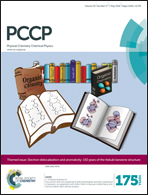Ether cleavage-triggered degradation of benzyl alkylammonium cations for polyethersulfone anion exchange membranes†
Abstract
Anion exchange membranes are of increasing interest due to their applications in many electrochemical devices such as solid-state alkaline fuel cells. However, their practical applications remain limited compared to proton exchange membranes as they have been found to degrade in alkaline media. This degradation is believed to be derived from the instability of the anion exchange group under alkaline conditions. Consequently, much effort has been focused on the development of an anion exchange group that is stable in alkaline media, allowing for application in membranes. Herein, we analyze the detailed alkaline degradation mechanism of a generally applied anion exchange membrane, composed of quaternary ammonium-modified polyethersulfone, using several model compounds. We found that decomposition of the anion exchange group was not derived from the instability of the ionic group itself, as commonly believed; rather, ether cleavage triggered the degradation of the ionic group. The mechanism proposed herein indicates that improvement of the backbone stability is much more important than optimization of the anion exchange group in developing a durable anion exchange membrane. Furthermore, careful analysis is necessary to precisely evaluate the stability of the anion exchange group in the membrane.


 Please wait while we load your content...
Please wait while we load your content...